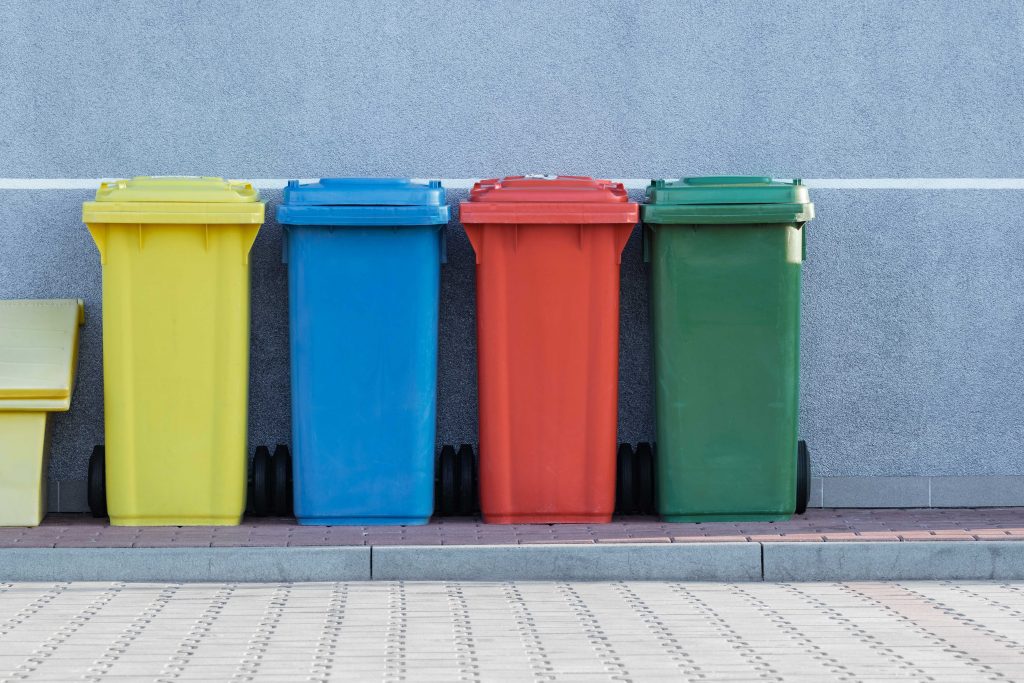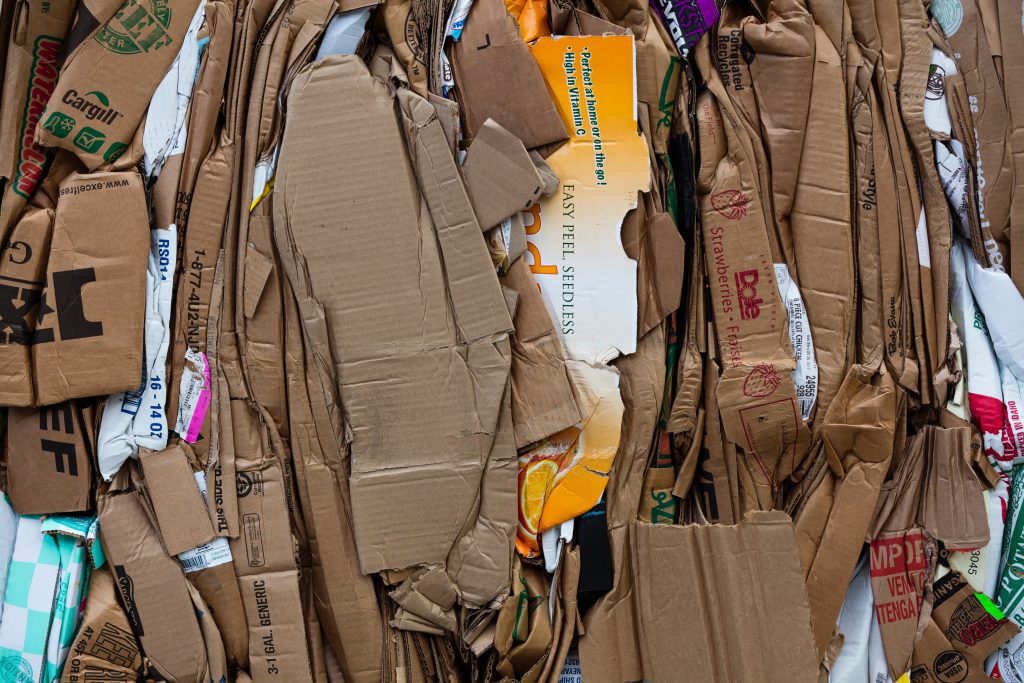You’ve pledged a more eco-conscious lifestyle for 2020. Recycling correctly: check. Composting: check. Thrifting: You wonder why you hadn’t done it sooner. But now you’re on to tackling bigger challenges: making your job an eco-friendly workspace . From thousands of sheets of paper lost to mistake prints to food scraps piled in trash bins, office buildings contribute more than their fair share to the waste crisis. In 2017, the U.S. generated 268 million tons of waste, or 5 pounds per person a day, according to the EPA. Imagine what a difference it could make if buildings across the globe made a commitment to halt needless waste production—uneaten food, paper and plastics, coffee cups. The problem is, broaching environmental issues at work can be a touchy subject, viewed as contentious or too political.
You can create an eco-friendly workspace
Here to alleviate some of that angst is Amber Salcedo, mechanical E.I with Jacobs, a global architectural and engineering consulting firm that provides, among other things, infrastructure for waste, water renewal, transportation, buildings and construction management. If Salcedo’s title makes you think huh?, put simply, she solves problems for a living. And this pragmatic approach may be your best bet when it comes to convincing your coworkers to change their habits.
People trust measurable outcomes. And while your colleagues may not glom on to all of your suggestions, what isn’t sustainable (no pun intended) is keeping the status quo. “I work in a problem-solving industry, so the answer of ‘This is how we’ve always done it’ is not acceptable,” Salcedo says. “If there’s a way to improve, it’s our responsibility to at least look into it.”
Last year, Jacobs announced a company-wide strategy to align its sustainability targets with the United Nation’s Sustainable Development Goals. Called PlanBeyond, this program encompasses three pillars: people, partnerships and places. Focusing on the latter, Salcedo shares some goals that have played out successfully at her company under Jacobs’ Sustainable Workplace Plan, an offshoot of PlanBeyond. Big projects like installing solar panels may be a future endeavor. But these simple tips below are eco-friendly practices you and your coworkers can start now.

Begin with a waste audit
Let’s be honest, no one wants to reckon with bad habits. A waste audit sounds about as daunting as stepping on a scale after months of binge eating. Nonetheless, it can be an eye-opening experience, especially when considering the severity of the waste problem in the U.S., which accounts for 12% of municipal solid waste worldwide.
Performing a waste audit can indicate areas of improvement in your company’s waste management practices. Not to mention, it will hold you, and your coworkers, accountable. Salcedo recommends weighing the amount of garbage your office produces in a day, then calculating that number by the number of work days in a year. With a tangible result in hand, she says, “you’re better positioned to find ways to reduce hauling costs and negotiate for waste and recycling services that actually fit your needs.”
Buy reusable dishware
This one may seem self-evident, but can be difficult to incorporate depending on the size of your company. Larger organizations, like Jacobs, come equipped with full-size kitchens, including a dishwasher, making the switch to reusable silverware and dishes easier. Conversely, for smaller office spaces, offering little more than a paltry breakroom, such an idea can pose significant hurdles.
If your office building has a dishwasher, make the change to reusables. No excuses! Dishwashers are more efficient in both water consumption and energy. What’s more, they save time and require less labor than handwashing. But if investing in a dishwasher isn’t feasible for your company, handwashing is better than the alternative: sending thousands of tons of plastic and waste to landfills, later to be dumped in our already trash-laden oceans. Here’s a tip: Make the process fun and equitable for the entire staff.
Delegate tasks according to employees’ preferences. Some may enjoy washing dishes, some may want to coordinate dishware to specific events—glass cups for formal meetings, bamboo utensils for casual gatherings—while still others may seize the opportunity to go on a shopping spree. (We recommend hitting the thrift stores before buying new.) Whatever plan you and your coworkers decide, make sure it’s sustainable and fair to everyone.

Green your catering
Sustainable catering is one of the easiest ways for your company to reduce its carbon footprint and become an eco-friendly workspace. Think about it: Office events are notorious for producing waste—tables littered with single-use plastics, trash cans brimming with half-eaten food.
Fortunately, with a little creativity, you can introduce long-term sustainable practices to your company. Jacobs, for instance, no longer orders boxed lunches, opting instead for a family-style setup, which produces far less packaging. The company also uses biodegradable tableware for events with fewer than 20 attendees and house dishes and cups for larger events. Whether your workplace is a local startup or a global enterprise like Jacobs, avoiding single-use catering items will both save on storage space—think of the real estate plastic water bottles consume—and save on costs. Now that’s a bottom-line improvement that will impress your boss!

Avoid contaminated recyclables
Once reserved for environmentalists, recycling has now become de rigueur, a millennial practice made mainstream by the recent media attention paid to climate change. Recycling prevents the felling of hundreds of thousands of trees, helps stem the flow of garbage sent to landfills and improves bottom lines by cutting down on energy and disposal costs. Plus, it offers those with a heavy conscience a sense of atonement: You may partake in a consumerist market, but that doesn’t mean you can’t, in some small measure, help the planet.
But as recycling facilities become overburdened—as they have of late, especially with plastics—the risks of contaminated recyclables, those ultimately banished to landfills, increase. The EPA estimates that only 30% of U.S. waste actually gets recycled. And since China’s ban on foreign plastics, which prompted dozens of U.S. recycling facilities to shutter last year, that number has more than likely dropped. Here’s what you can do at the office to ensure your recycling gets put to best use.
- Ask for a printed copy of protocols from the company that picks up your office’s recycling. This will give you a better indication as to what recycling products are acceptable.
- Clean all products before tossing them into a recycling bin.
- Use only dry cardboard.
- Remove tops from bottles.
- Do not place greasy pizza boxes, foam products, plastic utensils or plastic bags into a recycling bin.
- If you’re unsure whether a product can be recycled, place it in the trash.
- Recycle all paper, plain or printed, except for envelopes with a plastic address window.
- Provide a bin designated for plastic bags, and coordinate a system with your coworkers where one person drops of the bags at a grocery store on the way home.
- For more tips, see our blog on recycling dos and don’ts.
Banish the Keurig
This office staple may be a commodity that saves time and requires less cleanup, but it’s a major culprit of waste. The coffee pods aren’t recyclable, though some people reuse them several times, filling them with their own coffee grounds, before throwing them out. (Props for ingenuity!) However, a regular coffee maker is the way to go, especially since it eliminates plastic and extra packaging. And while you’re switching out those coffee pods for coffee grounds, be sure to steer clear of plastic or paper cups, many of which are lined with plastic. Invest in recyclable disposable cups for the office (check these out). Or better yet, go zero waste and buy coffee mugs.

Reduce paper printing
Entire forests have died to supply offices with printing paper, only for much of it to end up in the trash. The average office discards 20,000 sheets of paper each year, and only half of that is recovered for recycling. The other half is lost to landfills, where they decompose and release methane, a heat-trapping gas, into the atmosphere.
The most sustainable approach to this problem is to avoid printing altogether. But if that’s not an option, choose double-sided printing to save paper, and review your document carefully to avoid needless prints. Jacobs uses FollowMe Printing, a software that sends print jobs to a shared queue, allowing users to cancel the request at any time from a secure device. Creating an extra step in the printing process will urge employees to reconsider whether printing is really necessary.

Take advantage of local composting services
Given the abundance of food in the U.S., it comes as no surprise that almost half of it ends up in the garbage. Roughly 30% of the average American’s waste in a day consists of food scraps. Left to decompose in a landfill, this food waste releases methane gas, due to lack of oxygen, which in turn fuels greenhouse gas emissions that contribute to global warming. A composting service makes avoiding this situation easy. You simply toss your scraps into a bin, and someone picks it up for you at the end of the week. Voilà, problem solved.
For Orlando-based businesses, O-Town Compost is a great option. The service provides a sleek, stainless-steel bin, with a compostable liner, which helps avoid contamination and prevents odors. The program also provides instructions on items that can and can’t be composted, along with quarterly reports to track your office’s waste diversion progress. Before purchasing a composting service, however, ask around the office to see if anyone composts at home. You may find a few volunteers who would gladly take food scraps to add to their compost heap.

Prepare a sustainable pitch
Perhaps the best way to devise a pitch that promotes an eco-friendly workspace is to take a technical approach: assess the problem, find areas for improvement and prepare a business case. What are the upfront costs versus long-term savings? Are the logistics of the plan realistic? What could the company do with the additional money saved? When you pitch your plan to your boss, highlight opportunities for positive PR.
For many enterprises, and recently politicians, sustainability has vaulted to the top of the agenda as a foremost issue. Seize the moment by illustrating how your company can send a powerful public message at a time when its needed most—before global heating destroys the planet. “Change usually starts with one person speaking out and saying that there’s a problem,” Salcedo says. “Be the person who speaks up.”








